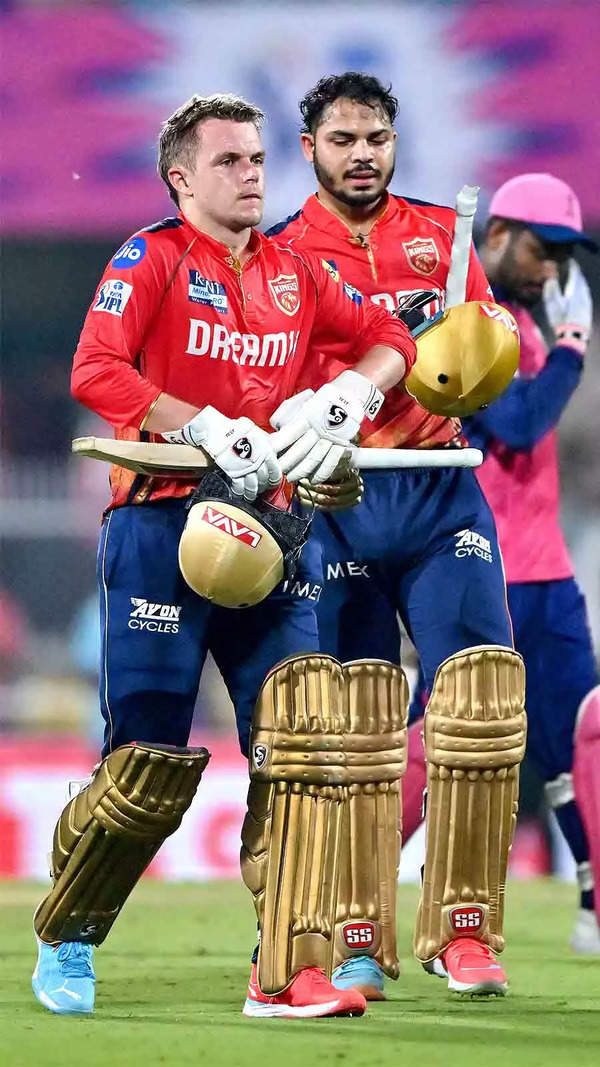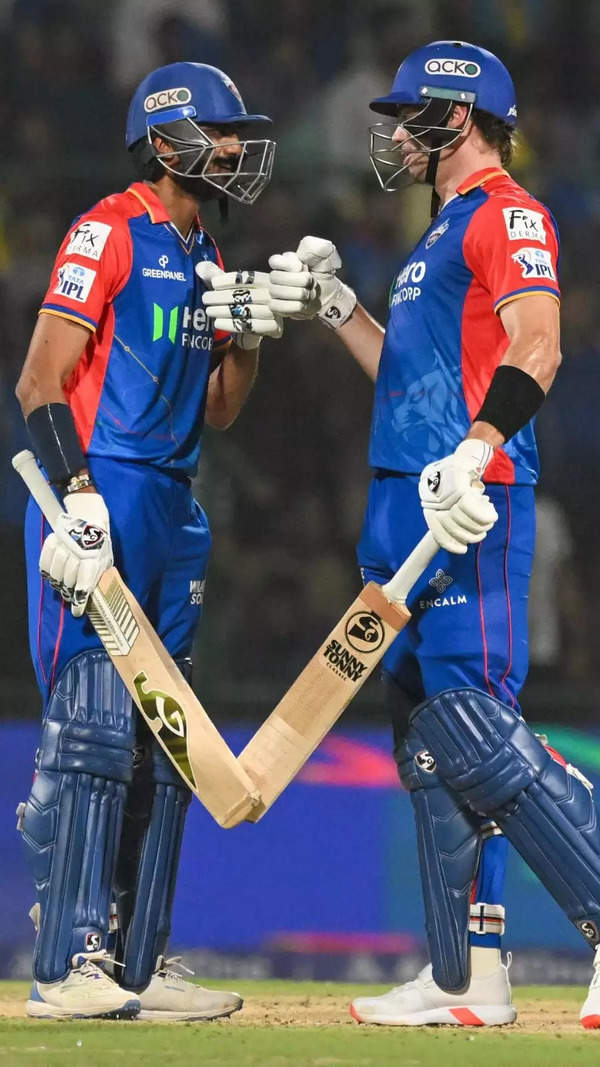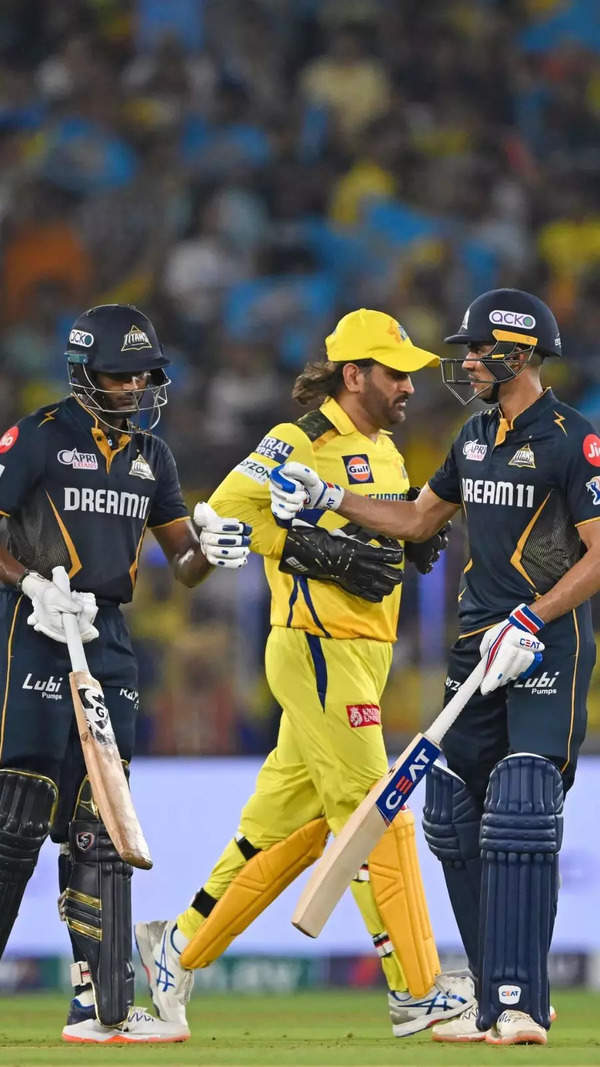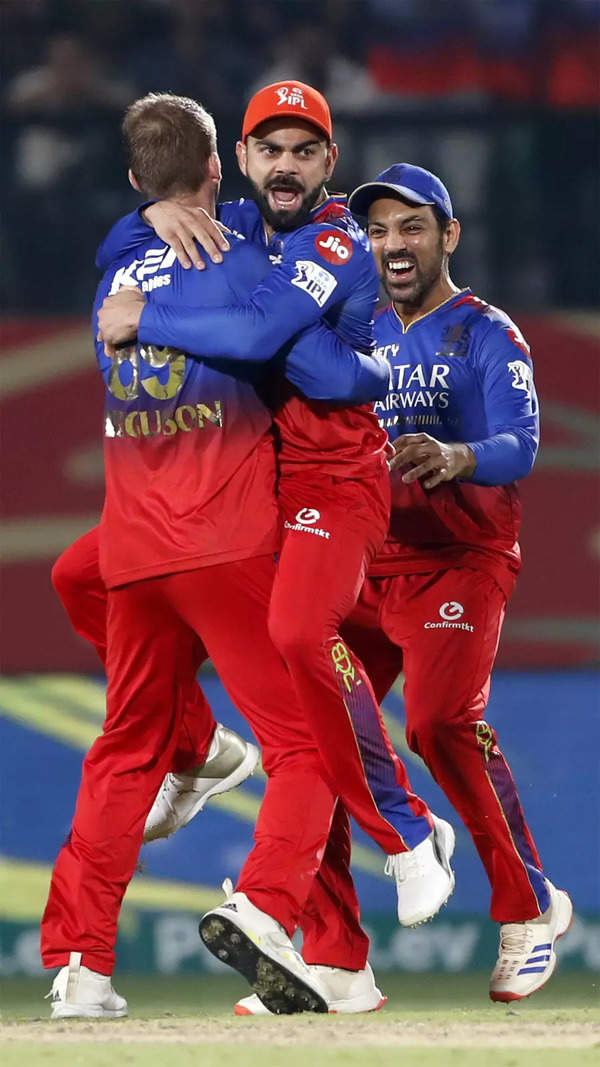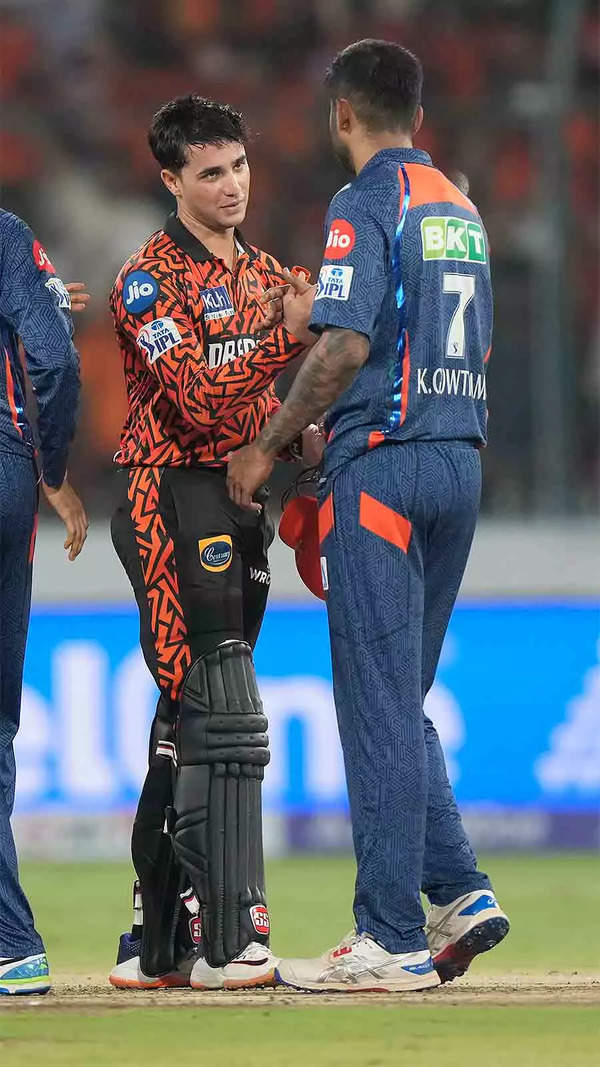- News
- Sports News
- Cricket News
- The cricket ball comparison: SG vs Kookaburra vs Dukes explained
Trending
This story is from February 11, 2021
The cricket ball comparison: SG vs Kookaburra vs Dukes explained
Avid cricket fans will know this, but a lot of people might not be aware that the cricket balls used in different countries for Test cricket are different. There are three main manufacturers who produce cricket balls (red, white and pink) for international cricket in different countries.
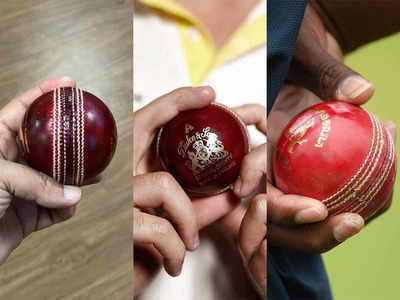
(Getty Images)
NEW DELHI: Avid cricket fans will know this, but a lot of people might not be aware that the cricket balls used in different countries for Test cricket are different.
At a time when the debate over the SG balls being used for Test cricket in India has been reignited after the Chennai Test between India and England, here's a quick look at the various balls being used in international Test cricket across countries.
There are three main manufacturers who produce cricket balls (red, white and pink) for international cricket in different countries.
The three manufacturers are:
2. Kookaburra Sport - An Australian sports equipment company that manufactures cricket and field hockey equipment. It's named after the tree Kingfisher birds native to Australia and New Guinea. Kookaburra cricket balls are manufactured in Australia and are used in Test matches in Australia, New Zealand, South Africa, Pakistan, Sri Lanka and Zimbabwe.
3. British Cricket Balls Limited - Established in 1760 by the Duke family, the company specialises in manufacturing cricket equipment. In 1987 it was bought by Indian businessman Dilip Jajodia. They make the very popular Dukes cricket ball, which is used for Test Cricket in England and West Indies. It's also used in Ireland.

THE BIG DIFFERENCES
Stitching
The first basic difference is in the stitching. The Dukes is a hand-stitched ball. The thread of the hand-stitched ball is more prominent and stays longer on the ball.
Kookaburra is predominantly a machine-stitched ball. The two inside rows are hand-stitched, while the two outer rows on each side are machine stitched. The seam of the Kookaburra ball is mostly embedded in the surface and hence it doesn't swing quite as much as the Dukes cricket ball.
This is precisely the reason that swing bowlers across the world prefer the Dukes rather than the Kookaburra. In fact, in 2017, New Zealand Cricket had experimented with the Dukes ball because of the swing it provided to their frontline seamers like Tim Southee and Trent Boult.
The SG ball is also hand-stitched and has been used in India for Test matches since 1994. The seam of the SG ball is more prominent and the threads are closer together than those on the Kookaburra.
 Stuart Broad and James Anderson have used the Dukes ball to their advantage in favourable conditions of England. (Getty Images for ECB)
Stuart Broad and James Anderson have used the Dukes ball to their advantage in favourable conditions of England. (Getty Images for ECB)
Seam
All six rows of stitching on the Dukes ball go backwards and forwards across the joint of the two cups forming the ball, so it holds the ball together much better and thereby the ball retains the shape and hardness longer. In the Dukes ball the seam remains pronounced for a long time if properly preserved by the fielding team.
The two halves of the Kookaburra ball are held together by the two middle rows which are hand stitched, which do not provide the same strength as six full rows in keeping the cover on. The outer rows which are machine stitched are to provide grip for the bowlers. For this reason, the Kookaburra doesn't have a pronounced seam, since machine stitching needs the ball shape to be flatter.
The stitching of the hand-crafted SG ball is done by a thicker thread and hence it has a prominent seam, which is closer together than the other balls.
Weather and Pitch Conditions
Weather conditions and the nature of the pitches have played a significant role in the evolution of the cricket ball over the years.
The conditions in England are more suited to swing bowling. The mostly overcast conditions, the ground conditions, the green top pitches, all help the Dukes ball to retain the seam and shape and hence (depending also on the skill levels of different bowlers), it tends to swing more. The pitches in England compliment the Dukes ball very nicely.
 This is not the first time that Ashwin has expressed his displeasure with the SG ball. (TOI Photo)
This is not the first time that Ashwin has expressed his displeasure with the SG ball. (TOI Photo)
The wear and tear that a cricket ball is subjected to on the hard and abrasive Indian pitches is a lot more than those in England. In India, even on the first day or the second day, the pitch sometimes starts breaking up and the spinners come into play, using the cracks on the pitches to their advantage. The hand stitched SG ball therefore is expected to last better for longer. Virat Kohli's recent comments after the Chennai Test vs England, where he said that he was surprised that the SG balls seam was 'completely destroyed in 60 overs', was in this context.
After the initial shine of the SG ball wears off, the bowlers start rigorously preparing/polishing one side. The two different natures of the two sides of a cricket ball (rough and shiny) coupled with which way the seam is facing when delivered by the bowler and the laws of aerodynamics brings swing into the equation (conventional/reverse/contrast).
On the bouncy pitches of Australia and South Africa, it’s the Kookaburra ball that’s the most suitable. There is swing initially, but as the seam is lost, the pacers can rely on the bounce off the tracks for breakthroughs. The Kookaburra though does tend to lose shape after a period of time.

The Dukes ball gives bowlers a lot to play with, since it does more in the air and also off the pitch. This is predominantly due to it's hand stitched pronounced seam. Since the ball stays harder for longer you will also see slip fielders in England being in the game through the day, because the ball carries to the slip cordon easily.
Player preferences
It's been interesting to note, how with more and more quality fast bowlers beginning to play together for India, the preference for the Dukes ball has gone up. The SG ball has faced some flak in recent times for not doing enough on Indian tracks and deteriorating quickly.
Last year, Jasprit Bumrah had gone on record to say that he enjoys bowling the most with the Dukes ball, more than the SG or the Kookaburra because of the swing that the Dukes ball generates. Bumrah felt that that helps maintain the balance between bat and ball in a game that is already loaded so much in favour of the batsmen.
 Jasprit Bumrah prefers to bowl with the Dukes ball more than the SG or the Kookaburra. (Getty Images)
Jasprit Bumrah prefers to bowl with the Dukes ball more than the SG or the Kookaburra. (Getty Images)
In 2018, Umesh Yadav had also called for the introduction of the Dukes ball in India, even though the SG ball has helped India dominate in home conditions.
In the same year, Virat Kohli said the Dukes ball is the most suitable ball for Test match cricket across the world.
From a spinners' point of view, R Ashwin had said he preferred the Kookaburra the most.
In an interview to TimesofIndia.com after the first Test in Chennai where Virat and Ashwin had spoken about how they were surprised that the SG ball had deteriorated very quickly, Director of SG Paras Anand had said the company will take the players' feedback and use that to improve the quality of the balls going ahead.
At a time when the debate over the SG balls being used for Test cricket in India has been reignited after the Chennai Test between India and England, here's a quick look at the various balls being used in international Test cricket across countries.
There are three main manufacturers who produce cricket balls (red, white and pink) for international cricket in different countries.
The three manufacturers are:
1. Sanspareil Greenlands (SG) - A company based in Meerut since 1950. It was established in 1931 as Sanspareils by brothers Kedarnth and Dwarkanath Anand. In 1940 Greenlands was established for export purposes. Apart from the SG balls that are used in Test cricket in India and for the Ranji Trophy, they also manufacture cricket bats.
2. Kookaburra Sport - An Australian sports equipment company that manufactures cricket and field hockey equipment. It's named after the tree Kingfisher birds native to Australia and New Guinea. Kookaburra cricket balls are manufactured in Australia and are used in Test matches in Australia, New Zealand, South Africa, Pakistan, Sri Lanka and Zimbabwe.
3. British Cricket Balls Limited - Established in 1760 by the Duke family, the company specialises in manufacturing cricket equipment. In 1987 it was bought by Indian businessman Dilip Jajodia. They make the very popular Dukes cricket ball, which is used for Test Cricket in England and West Indies. It's also used in Ireland.
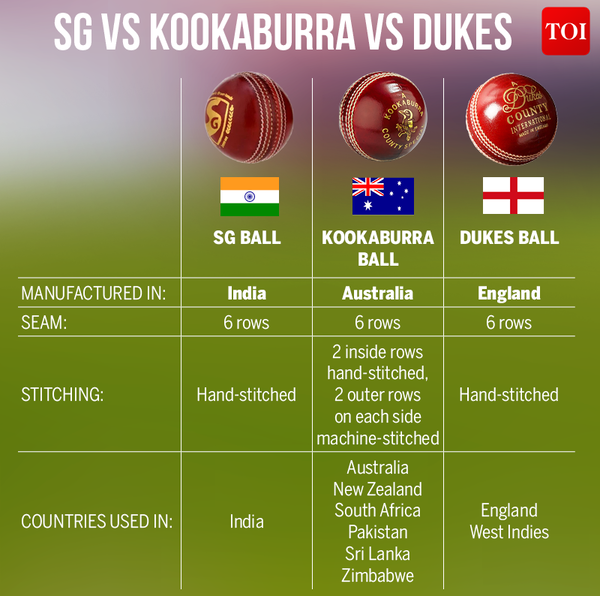
THE BIG DIFFERENCES
Stitching
The first basic difference is in the stitching. The Dukes is a hand-stitched ball. The thread of the hand-stitched ball is more prominent and stays longer on the ball.
Kookaburra is predominantly a machine-stitched ball. The two inside rows are hand-stitched, while the two outer rows on each side are machine stitched. The seam of the Kookaburra ball is mostly embedded in the surface and hence it doesn't swing quite as much as the Dukes cricket ball.
WATCH: SG pink ball being manufactured in Meerut
This is precisely the reason that swing bowlers across the world prefer the Dukes rather than the Kookaburra. In fact, in 2017, New Zealand Cricket had experimented with the Dukes ball because of the swing it provided to their frontline seamers like Tim Southee and Trent Boult.
The SG ball is also hand-stitched and has been used in India for Test matches since 1994. The seam of the SG ball is more prominent and the threads are closer together than those on the Kookaburra.
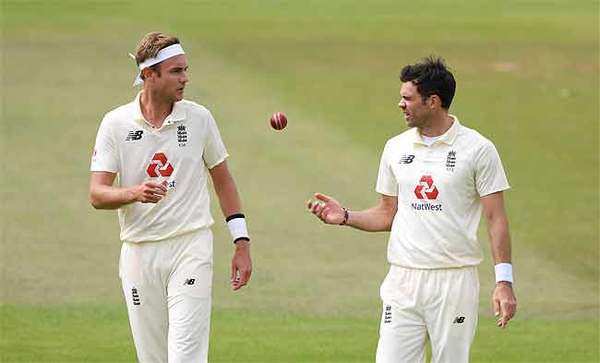
Seam
All six rows of stitching on the Dukes ball go backwards and forwards across the joint of the two cups forming the ball, so it holds the ball together much better and thereby the ball retains the shape and hardness longer. In the Dukes ball the seam remains pronounced for a long time if properly preserved by the fielding team.
The two halves of the Kookaburra ball are held together by the two middle rows which are hand stitched, which do not provide the same strength as six full rows in keeping the cover on. The outer rows which are machine stitched are to provide grip for the bowlers. For this reason, the Kookaburra doesn't have a pronounced seam, since machine stitching needs the ball shape to be flatter.
The stitching of the hand-crafted SG ball is done by a thicker thread and hence it has a prominent seam, which is closer together than the other balls.
Weather and Pitch Conditions
Weather conditions and the nature of the pitches have played a significant role in the evolution of the cricket ball over the years.
The conditions in England are more suited to swing bowling. The mostly overcast conditions, the ground conditions, the green top pitches, all help the Dukes ball to retain the seam and shape and hence (depending also on the skill levels of different bowlers), it tends to swing more. The pitches in England compliment the Dukes ball very nicely.

The wear and tear that a cricket ball is subjected to on the hard and abrasive Indian pitches is a lot more than those in England. In India, even on the first day or the second day, the pitch sometimes starts breaking up and the spinners come into play, using the cracks on the pitches to their advantage. The hand stitched SG ball therefore is expected to last better for longer. Virat Kohli's recent comments after the Chennai Test vs England, where he said that he was surprised that the SG balls seam was 'completely destroyed in 60 overs', was in this context.
After the initial shine of the SG ball wears off, the bowlers start rigorously preparing/polishing one side. The two different natures of the two sides of a cricket ball (rough and shiny) coupled with which way the seam is facing when delivered by the bowler and the laws of aerodynamics brings swing into the equation (conventional/reverse/contrast).
On the bouncy pitches of Australia and South Africa, it’s the Kookaburra ball that’s the most suitable. There is swing initially, but as the seam is lost, the pacers can rely on the bounce off the tracks for breakthroughs. The Kookaburra though does tend to lose shape after a period of time.
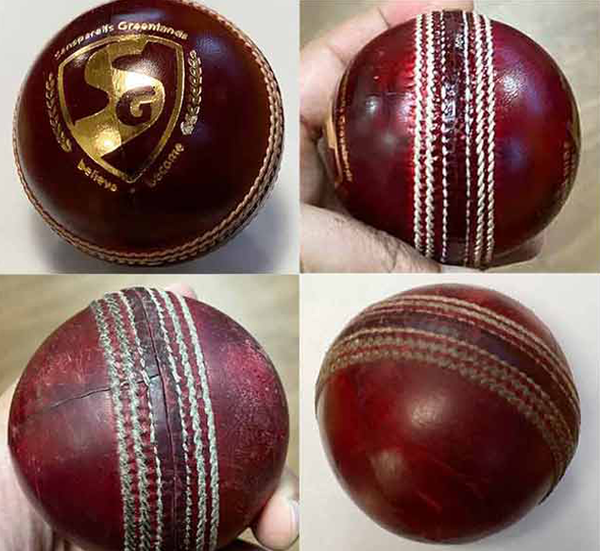
The Dukes ball gives bowlers a lot to play with, since it does more in the air and also off the pitch. This is predominantly due to it's hand stitched pronounced seam. Since the ball stays harder for longer you will also see slip fielders in England being in the game through the day, because the ball carries to the slip cordon easily.
Player preferences
It's been interesting to note, how with more and more quality fast bowlers beginning to play together for India, the preference for the Dukes ball has gone up. The SG ball has faced some flak in recent times for not doing enough on Indian tracks and deteriorating quickly.
Last year, Jasprit Bumrah had gone on record to say that he enjoys bowling the most with the Dukes ball, more than the SG or the Kookaburra because of the swing that the Dukes ball generates. Bumrah felt that that helps maintain the balance between bat and ball in a game that is already loaded so much in favour of the batsmen.
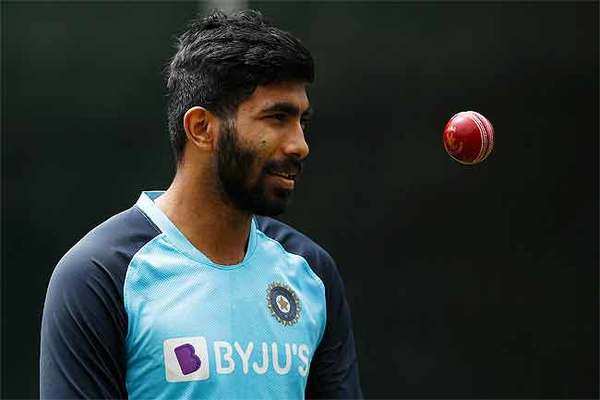
In 2018, Umesh Yadav had also called for the introduction of the Dukes ball in India, even though the SG ball has helped India dominate in home conditions.
In the same year, Virat Kohli said the Dukes ball is the most suitable ball for Test match cricket across the world.
From a spinners' point of view, R Ashwin had said he preferred the Kookaburra the most.
In an interview to TimesofIndia.com after the first Test in Chennai where Virat and Ashwin had spoken about how they were surprised that the SG ball had deteriorated very quickly, Director of SG Paras Anand had said the company will take the players' feedback and use that to improve the quality of the balls going ahead.
End of Article
FOLLOW US ON SOCIAL MEDIA

